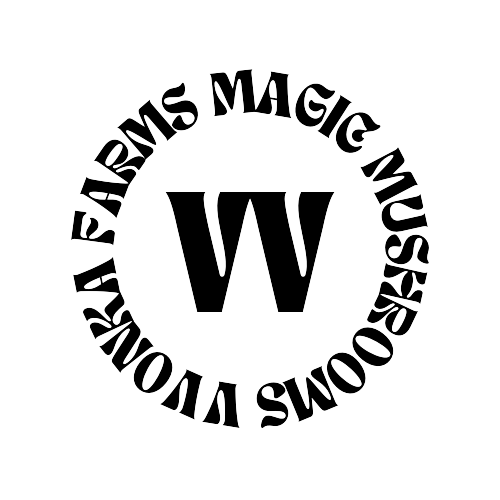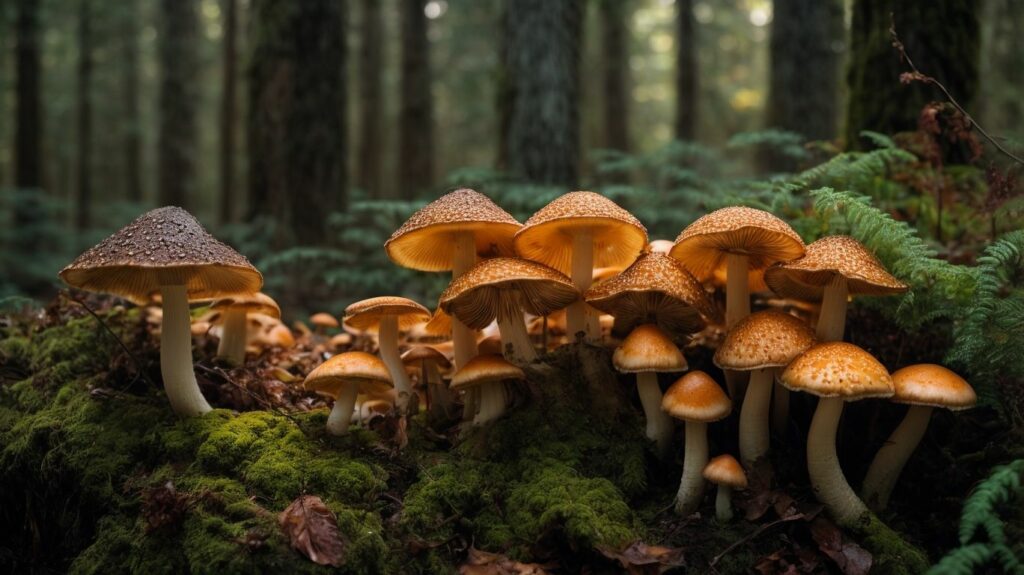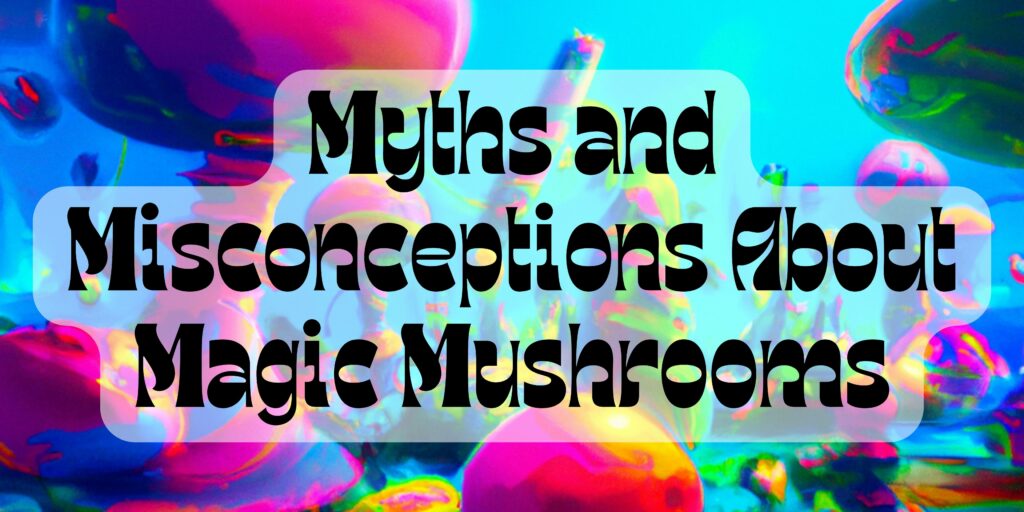Are you wondering if your shrooms have gone bad? As a mushroom enthusiast, it’s important to know the signs of spoiled shrooms. Don’t let your next trip be ruined by bad mushrooms – read on to find out how to spot when your shrooms have gone bad.
Do Shrooms Go Bad?
Shrooms, like any other food, can go bad over time. Factors such as moisture, temperature, and exposure to air can affect their freshness. As they age, shrooms may become slimy, discolored, or develop a foul smell. Consuming spoiled mushrooms can lead to food poisoning or other health issues.
To ensure their longevity, store shrooms in a cool, dry place and use them within a few days. If you’re unsure about their freshness, it’s better to err on the side of caution and discard them. Remember, freshness is crucial when it comes to enjoying the benefits of shrooms. Stay safe and enjoy your culinary journey!
What Are Shrooms?
Shrooms, also known as magic mushrooms or psilocybin mushrooms, are fungi that contain the psychoactive compound psilocybin. These mushrooms are typically found in the wild but can also be cultivated for recreational or medicinal use. When consumed, psilocybin is converted into psilocin in the body, leading to altered perceptions, hallucinations, and changes in mood and consciousness. Shrooms have been used for spiritual and therapeutic purposes for centuries. It is important to note that the consumption of shrooms carries potential risks and should be approached with caution and under appropriate guidance.
What Are the Signs That Shrooms Have Gone Bad?
When determining if shrooms have gone bad, it’s important to look for specific signs of spoilage. Here are a few indicators to keep in mind:
- Foul odor: If the mushrooms have an unpleasant or off-smell, it’s a clear indication that they have gone bad.
- Sliminess: Fresh mushrooms should have a firm texture. If they become slimy or mushy, it’s a sure sign of spoilage.
- Discoloration: Any significant changes in color, such as browning or darkening, indicate that the shrooms are no longer fresh.
- Mold or fungus growth: If you notice any mold or other fungi growing on the mushrooms, they should not be consumed.
How Long Do Shrooms Last?
- Proper storage: To extend the shelf life of shrooms, store them in an airtight container in a cool, dry place.
- Whole mushrooms: When stored correctly, whole mushrooms can last for about 7-10 days.
- Dried mushrooms: Dried shrooms have a longer shelf life and can last for several months to a year.
- Freezing: By freezing shrooms, their shelf life can be significantly extended to a year or more.
- Signs of spoilage: If you notice any mold, discoloration, or a foul smell, it is a sign that the shrooms have gone bad and should not be consumed.
Just like a relationship, the shelf life of shrooms can be affected by factors such as temperature, moisture, and light. But unlike a relationship, storing them in a cool, dry place can actually make them last longer.
What Are the Factors That Affect the Shelf Life of Shrooms?
There are several factors that can affect the shelf life of shrooms:
- Moisture: Excess moisture can accelerate spoilage, making it important to keep shrooms dry.
- Temperature: Storing shrooms in a cool and dry place can help prolong their freshness.
- Light: Shrooms can degrade when exposed to light, so it is recommended to store them in a dark container.
- Airflow: Proper ventilation is necessary to prevent moisture buildup, which can lead to spoilage.
- Packaging: Using airtight containers or vacuum-sealed bags can help preserve shrooms for a longer period of time.
- Contamination: To prevent spoilage, it is important to avoid exposing shrooms to contaminants.
Pro-tip: To maximize the shelf life of shrooms, it is recommended to individually wrap them in paper towels before storing them in a sealed container in the refrigerator. This helps maintain optimal moisture levels.
Are There Any Risks Associated with Consuming Expired Shrooms?
Consuming expired shrooms can pose risks to your health. As mushrooms age, they can degrade in quality, lose potency, and may even develop harmful bacteria or molds. Consuming expired shrooms could lead to food poisoning or other adverse reactions. It is essential to check the expiration date and properly store mushrooms to ensure their freshness and safety. Remember, when in doubt, it’s best to discard expired shrooms to avoid any potential risks.
In 2019, there were reports of a group of friends experiencing severe illness after consuming expired shrooms they found in the back of their fridge. The mushrooms had passed their expiration date, and unknowingly consuming them led to food poisoning symptoms. This incident highlights the importance of being cautious and aware of the risks associated with consuming expired shrooms.
How Can You Tell If Shrooms Are Still Safe to Consume?
You can determine if shrooms are still safe to consume by following these steps:
- Check for mold: Inspect the mushrooms for any signs of mold growth, such as fuzzy or discolored patches.
- Examine the texture: Safe mushrooms should have a firm and dry texture. Mushrooms that feel slimy or have a mushy consistency may indicate spoilage.
- Observe the smell: Fresh mushrooms have an earthy, nutty aroma. If there is a strong, unpleasant odor, it could be a sign of decay.
- Consider the color: While some discoloration is normal, significant changes in color, such as darkening or yellowing, may indicate spoilage.
- Know the storage time: Mushrooms typically have a shelf life of approximately 7-10 days when stored properly in the refrigerator. If they have been stored longer, it is best to err on the side of caution and discard them.
What Are the Different Ways to Consume Shrooms?
There are various methods for consuming shrooms, depending on personal preference and desired effects. Some common ways include:
- Eating them raw: Consuming shrooms directly can provide a potent and immediate experience.
- Brewing tea: Boiling dried shrooms in water and adding flavorings can make their taste more palatable while still delivering the desired psychedelic effects.
- Capsules: Grinding dried shrooms into a powder and filling capsules allows for easy ingestion and precise dosing.
- Microdosing: Taking a sub-perceptual dose regularly can offer long-term benefits without the full psychedelic experience.
- Mixing with food or drinks: Adding shrooms to meals or blending them into smoothies can mask their taste and make consumption more enjoyable.
A friend once shared their experience of experimenting with shrooms by making a delicious mushroom risotto infused with finely chopped dried shrooms. This culinary adventure not only provided a unique taste experience, but also served as a transformative journey of self-discovery and introspection.
They say laughter is the best medicine, but I don’t think they meant laughing at the effects of consuming expired shrooms.
What Are the Effects of Consuming Expired Shrooms?
Consuming expired shrooms can have a range of effects on both the body and mind. These effects can vary from mild discomfort to severe health risks. The potency of expired shrooms may be significantly diminished, resulting in a weaker psychedelic experience. Furthermore, expired shrooms may contain harmful bacteria or mold, which can lead to digestive problems or allergic reactions. It is crucial to avoid consuming expired shrooms for the sake of your safety and well-being. Always check the expiration date and properly store fresh shrooms to maintain their potency and minimize any potential health risks.
Properly storing shrooms is key, unless you want to experience a psychedelic mold trip.
How Can You Properly Store Shrooms to Extend Their Shelf Life?
Properly storing shrooms is crucial to extend their shelf life and maintain their potency. Here are some steps you can follow:
- Dry them thoroughly: Remove excess moisture by thoroughly drying the shrooms.
- Use airtight containers: Store the dried shrooms in airtight containers to prevent moisture and exposure to air.
- Keep them in a cool, dark place: Store the containers in a cool, dark place such as a pantry or refrigerator to slow down degradation.
- Avoid direct sunlight: To prevent degradation of potency, keep the shrooms in a dark place and away from direct sunlight.
- Use desiccants: Adding desiccants like silica gel packets can help absorb any remaining moisture.
- Check for signs of spoilage: Regularly inspect the shrooms for mold, discoloration, or any foul odors, and discard if any signs of spoilage are present.
What Is the Best Way to Store Shrooms?
To ensure the longevity of shrooms, proper storage is crucial. The best way to store shrooms is to keep them in an airtight container, such as a glass jar or a resealable bag. Store them in a cool, dark place, away from moisture and light. Avoid storing them in the refrigerator, as the moisture can cause them to deteriorate. Additionally, make sure to label the container with the date of purchase to keep track of their freshness. By following these storage guidelines, you can extend the shelf life of your shrooms and preserve their potency. Remember, always exercise caution and do thorough research before consuming shrooms. Happy storing!
Don’t keep your shrooms in a dark, damp place – unless you want a funky science experiment instead of a psychedelic experience.
What Are the Do’s and Don’ts of Storing Shrooms?
To properly store shrooms and extend their shelf life, it is important to follow these do’s and don’ts:
- Do store shrooms in an airtight container to prevent moisture and contaminants from entering.
- Don’t store shrooms in direct sunlight or in a humid environment, as this can cause them to degrade.
- Do keep shrooms in a cool, dark place, such as a refrigerator, to maintain their potency.
- Don’t store shrooms alongside strong-smelling foods, as they can absorb odors easily.
- Do label and date your containers to keep track of freshness and avoid consuming expired shrooms.
By following these guidelines, you can ensure that your shrooms remain safe and potent for a longer period of time. Remember to always exercise caution and consult experts when identifying and harvesting shrooms. Stay informed and enjoy your shroom storage journey!
What Are Some Tips for Properly Identifying and Harvesting Shrooms?
When it comes to identifying and harvesting shrooms, it’s crucial to follow these tips for a safe and successful experience:
- Educate yourself: Learn about different species, their habitats, and distinctive features to avoid misidentification.
- Consult a guidebook or expert: Seek resources that provide accurate information and consult experienced mushroom hunters to enhance your knowledge.
- Start with easy species: Begin with easily recognizable, non-toxic mushrooms to build confidence before venturing into more challenging species.
- Use all your senses: Pay attention to smells, colors, textures, and spore prints to aid in proper identification.
- Harvest responsibly: Only collect mushrooms that you can positively identify and leave behind any that you are uncertain about to preserve their natural habitats.
Fact: Did you know that mushroom foraging has become a popular hobby for both nature enthusiasts and culinary enthusiasts?




